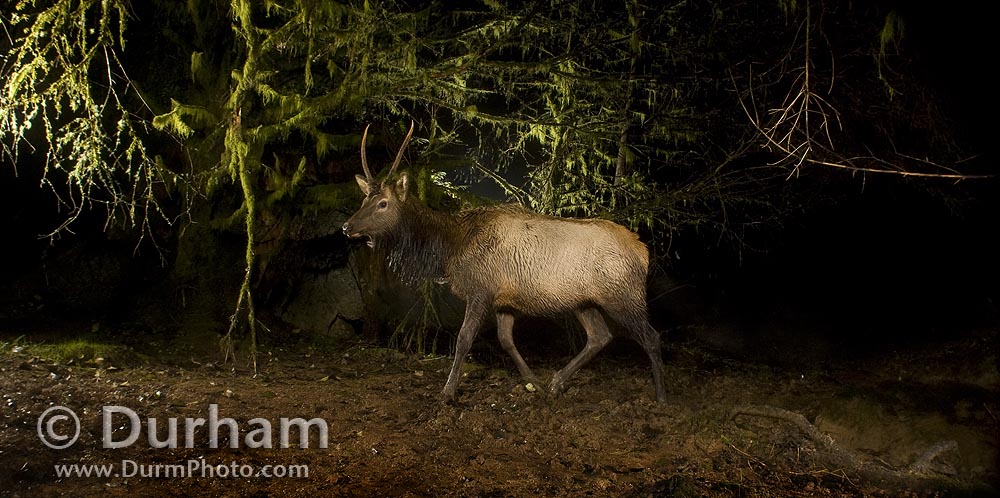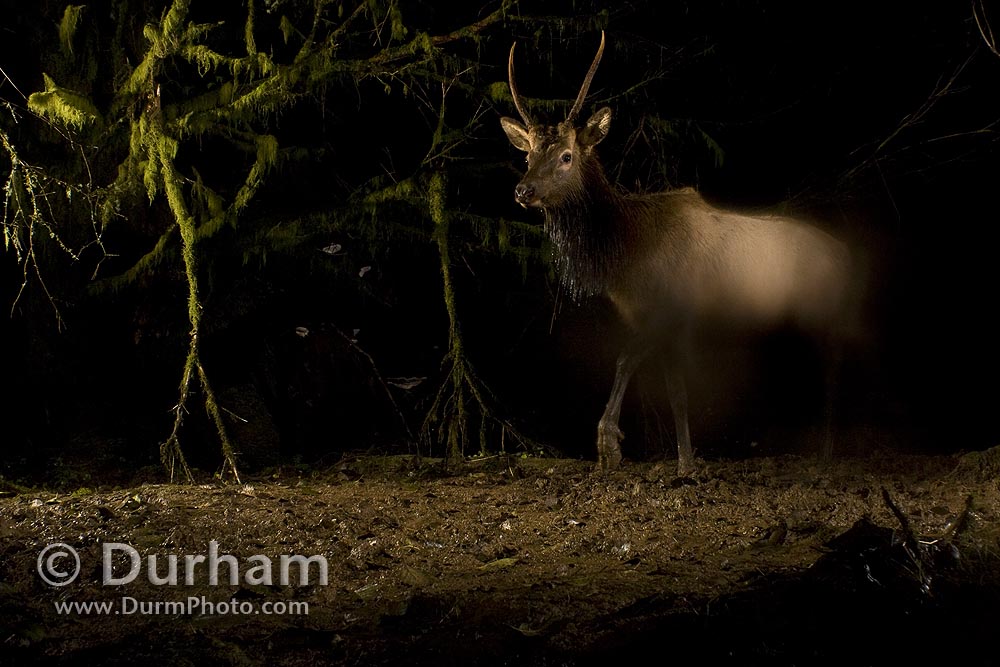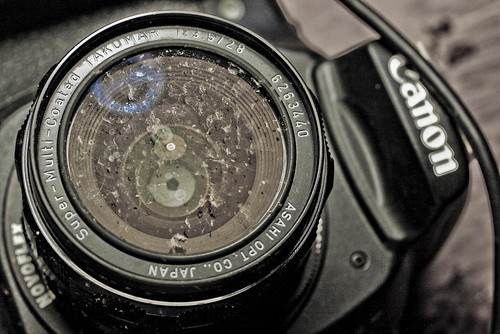
One of the reasons I use remote cameras is because they allow me to take photographs where no sane photographer could possibly pull it off. I had the cameras in place for six days before these photographs were taken. The nights were frigid and dark, and yet the cameras waited patiently.

Water on the lens makes this elk appear as if it is emerging from the ghostly shadows of a nocturnal forest (above).
I pulled the cameras after they were in place for 10 days, primarily because of a massive series of storms moving in from the Pacific. The weather had already been bad, and I had experienced several technical problems, and near destruction caused by water in the past.
My remote camera system has new waterproof connectors, and better weather housing, but I wasn't quite ready to leave it in the flood plain of a small creek.
In one image, the elk passed extremely close to a camera placed very low.

Just inches from the muddy ground, the camera lens received a coating of muck.


4 comments:
Ok, showing off again, fantastic elk pics.
I like the lighting and was wondering how you set up the remote flash? It looks like one flash but the flash seems to get the opposite rump on a couple of photos. How far to the left and high was the flash, been setting mine up but not getting the quality like you did.
Cliff, I like to get the flash far away from the camera, and in the top photo, I have 5 different units firing.
I think its too much light in this case. - i was trying to highlight the green moss for the background. (there are two lights behind the tangle of limbs)
The second photo has three flash units firing, and I like the quality of the light (and dark) a bit better.
In most cases, the terrain determines what I can do with flash, but I always do my best to backlight with carefully shaded flash. One flash is behind the elk on the left of the photo. On the right is a another flash at more of a 90 degree angle to the camera. One other flash is about four feet above the cameras.
By the way - your work is incredible, and its always a pleasure to see the next great image you have captured.
Michael Durham
Thanks for the information.
Just was wondering how you got the light behind the elk for no shadow. I guess 5 lights will do the trick but must have been fun setting up with all the mud. I really like the moss and background lighted around the elk, only in WA and Ore can you get that setting.
What's the longest duration you camera and flash units can stay out before powering down? Also are the flash units all hard wired or slave units? I'm working on a three flash set up with a old Nikon N90s and a older Trailmaster. Just wondering if the camera & flash units (SB26) one hard wired & one on slave with one Nikonons SB 103 on slave with stay awake for the signal to trigger when the Trailmaster triggers? It would be most helpful if you could write a detailed article about your setup. Great images as always. Chris
Post a Comment